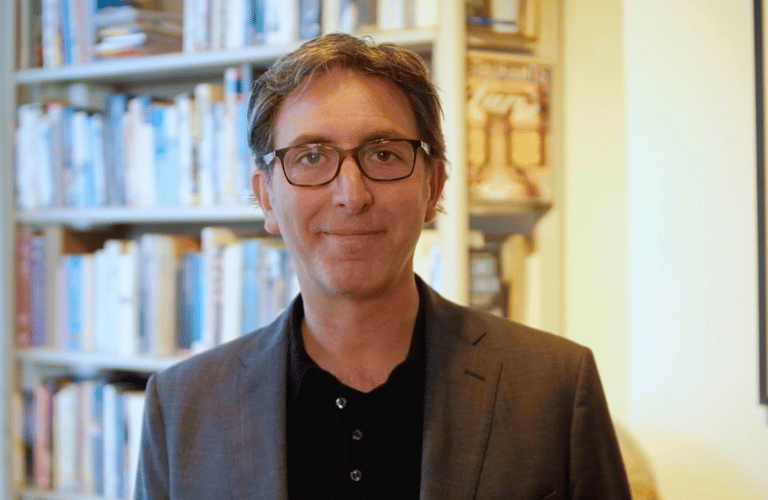CHARTER, a European Cultural Heritage Skills Alliance, met up with Harry Verwayen to chat about heritage and the digital world. As the General Director of the Europeana Foundation, he gets to support organisations in their digital transformation and he hopes that organisations such as CHARTER can help by bringing together all available opportunities in terms of digital skills and training in the cultural heritage sector.
He offers tips for organisations that want to digitise their collections and shares his thoughts on future needs and the need for change. CHARTER also discussed with Verwayen how Europeana is helping out to save cultural heritage at risk in Ukraine in a digital way. The interview was written and previously published by CHARTER, and is published by the European Heritage Tribune with permission of CHARTER.
How did you first get interested in digital cultural heritage?
Ever since I could read, I loved libraries. Ancient cultures mesmerised me. Fundamentally, I’ve always been interested in how to understand the world we interact with. My first job was in publishing microfiche, which was a librarian’s dream – you could stack thousands of books on a small amount of shelf space. But I was interested in digital so I started working with the Internet Archive and the Wayback Machine – which takes snapshots of the internet at different points in time.
I moved on to work in digital innovation for a scientific publisher and got interested in open access. With the internet, you don’t need many copies of something – you just need one, you open it up and everyone can access it. Then I moved to a think tank in Amsterdam, which was involved in a big audiovisual heritage digitisation project. Here, I came into contact with Creative Commons and with Europeana.
How would you explain Europeana and its purpose to someone that hasn’t encountered it yet?
We help museums, libraries and archives in becoming digital. Why? It enriches lives, and it has critically important socioeconomic effects. To me, the ability to interact with culture is probably the biggest advantage of digital transformation. We’re moving away from a fairly static paradigm that commands ‘you can look but you can’t touch’, to a world where you can look, you can touch, you can rehash and express yourself.
Where previously the physical experience has been completely separate from the digital, we’re now at the cusp of a new world that blends the two. You could walk through the Louvre, see the Venus de Milo, and with the help of technology (maybe glasses or your phone), you could interact with that statue, get more information, make it your own, send it to your friends. With technology, we can make culture more democratically accessible and available to very different groups of people.
What is your main tip for an organisation that wishes to start the process of digitising its collection?
Have a plan. Think before you even put the first thing through the scanner – what do you want to do with it? If you don’t know what kind of purpose you digitise for, you’ll make mistakes that you could avoid. Is it for preservation? Is it to provide access to a larger audience? Or to use the collection in something like a video game? The purpose will determine the mission. So, think with the end in mind. And talk to other people who have done it already – joining the Europeana Network Association is a great way to get started.
In terms of digital skills for cultural heritage, which would you say are currently well covered by the education and training sectors? What are the gaps and needs in the education of young cultural heritage professionals?
Most of the training available in the cultural heritage sector is capability building, so it’s about how to use a specific tool, how to set up a IIIF server, how to use the Europeana Licensing Framework… Yet, the biggest challenge is a lack of digital literacy and understanding at the top level – with the leaders of organisations. They don’t need to know how to set up servers themselves, but you’d like them to understand the possibilities and the challenges of digital sufficiently in order to make the right strategic choices for their organisation.
New professionals or those in mid-career tend to understand digital pretty well but they feel they have no agency to make change – and that’s because the layer above them doesn’t understand it. So, in order to help the new professionals, we need to develop that layer of digital understanding at the top level. Europeana works at both levels – with new professionals and leadership.
Which are in your opinion the emerging professional profiles in the ecosystem of digital cultural heritage?
Cultural heritage institutions are developing very different ways of working than they had in the past. Think how much it’s changed already – social media managers didn’t exist before 2007. Now, we need to consider how professional roles can embrace digital content and skills to enable the cultural heritage sector to work and collaborate with other sectors like education, research, technology and creative industries, how we can be inclusive, and what responsibility we have with regard to sustainability issues like climate action.
One emerging profile is the diversity and inclusion professional. The Europeana Foundation recently elected Jeftha Pattikawa to our Advisory Board, who has that role at the Dutch National Archives. And this is a very new role, it didn’t exist five years ago. Digital supports us to tell previously untold stories and to tell them in new ways, with that comes responsibility for doing so in an inclusive and diverse way. Another new role is for designers who facilitate visual thinking. When you have complex strategic things to discuss, these designers draw it – literally. It’s a form of visual facilitation, using digital tools and technologies that we didn’t have 15 years ago.
Besides the digital shift which is for sure an opportunity as much as a challenge, which other strong trend do you see for future skills in heritage practice?
Digital skills are only part of a much bigger change we’re going through. In the cultural sector, we’re moving from getting people into a building for them to watch but not touch to a scenario in which the cultural material is all around us and you can do whatever you want with it. To deal with that, we need change management, we need adaptability, an agile mindset. And we need better interpersonal skills, empathy and storytelling skills so we can understand and include all our audiences.
Europeana recently developed Inclusive Engagement Guidelines to help us foster an environment of openness, learning, awareness of biases, curiosity, and respect for multiple views and perspectives. But producing the guidelines can’t be the end of it, you need to train people and make it part of how you operate. The next Europeana conference is going to be hybrid – both physical and in person. It will require tremendous facilitation skills to engage audiences in the room and online – together – and so we need to develop that new skill in our staff too.

How do you personally engage with the cultural heritage world, besides the digital dimension that you are involved in professionally?
I go to libraries – not so much to borrow books, but to read them. It’s a great way to decompress from the stress of your day. And I love going to museums. I love the quietness of the way they engage you with their collections. I’m lucky to live close to the Mauritshuis so I can go there for a 20 minute break. I look at the Rembrandts and other things. It’s always fantastic. I also love statues – I often go to museums for the paintings but I find myself spending twice the amount of time with the statues.
In relation to the war in Ukraine, could you tell us if there’s a considerable digitalised archive of its cultural heritage? In a situation where cultural heritage (CH) is at such risk, which do you consider is the role of digital tools?
We’re supporting the SUCHO (Saving Ukrainian Cultural Heritage Online) initiative, which is archiving what is already available digitally and online. We are part of a group of 1,000+ volunteers, we’ve made a financial contribution and we’re spreading the word in our networks.
We’re also supporting SUM (Save the Ukraine Monuments), initiated by the 4CH project. Here, people are going into Ukraine to harvest what is digitally available but not online. They take disks to download material that can’t be sent upwards via an FTP server because the files are too big.
So, is there a considerable digitalised archive? Yes. Is it safe? I would say no. Both of the initiatives I mentioned have awakened us to the fact there is currently no centralised digital archive possibility in Europe, and that as a sector, we just don’t have a mechanism or framework to act quickly when crises hit.
Which highlights can we expect from Europeana during 2022?
We’re going to continue to find ways to make digital culture more accessible to more people, whether that’s through the use of artificial intelligence, multilinguality or showcasing more diverse voices and narratives in our storytelling.
As part of the European Commission’s digital decade, Europeana is at the heart of what is being called ‘a common European data space for cultural heritage’. We’re starting out on exploring what that means – and that’s complex but really interesting.
We’re also going to accelerate work in the digitisation of 3D monuments and sites and we’re exploring what role we can play in relation to climate action, following on from the launch of our Climate Action Manifesto, and climate action community.
Which are your hopes for the development of digital skills in the cultural heritage sector and how do you think CHARTER could contribute?
I think CHARTER can become one of the leading initiatives to do two things. One is to bring together all the opportunities that are available in terms of digital skills and training in the sector. The second is that it can help develop a real curriculum and standardisation for training in the sector. Those would be my hopes.
Biography Harry Verwayen- General Director Europeana Foundation, the operator of the Europeana Initiative. Across Europe, museums, galleries and archives digitise their collections. Europeana supports these organisations in their digital transformation by making these collections available as widely as possible so that people can find and use them. For work, for learning or just for fun. Our work is guided by creative collaboration, supportive teamwork and the idea that sharing and reusing cultural content can positively transform the world. Prior to this, Harry worked at the Amsterdam based think tank Kennisland where he was responsible for business model innovation in the cultural heritage sector. Harry holds a MA in History from Leiden University and has worked over ten years in the Academic Publishing Industry. Mediocre tennis player, reasonable cook, aspiring photographer.

